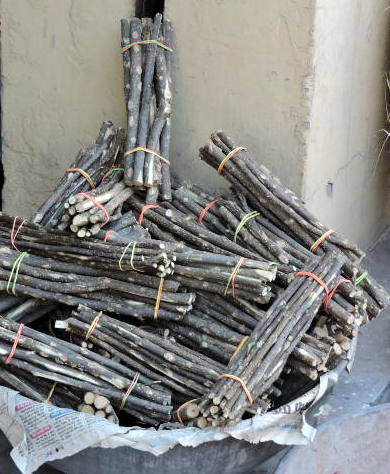

A teeth cleaning twig or datun is a tool made from a twig from a tree. It can help to prevent tooth decay and gum disease.


A teeth cleaning twig or datun is a tool made from a twig from a tree. It can help to prevent tooth decay and gum disease.
Chew sticks are twigs or roots of certain plants that are chewed until one end is frayed. This end can be used to brush against the teeth, [1] while the other end can be used as a toothpick. [2] Most commonly plants are used that have a high content of tannins (astringent and antibacterial) or other compounds that benefit the health of gums and teeth. [3] The earliest chew sticks have been dated to Babylonia in 3500 BC [2] and an Egyptian tomb from 3000 BC; [1] they are mentioned in Chinese records dating from 1600 BC [2] and in the Tipitaka, [4] the Buddhist Canon, purported to be giving account of events which took place in the north-western India around the 5th century BC.
In Africa, chew sticks are made from the tree Salvadora persica , also known as the "toothbrush tree".
In Islam, this tree is traditionally used to create a chew stick called miswak, as frequently advocated for in the hadith (written traditions relating to the life of Muhammad). [5]
Even today, many Indians in rural areas use neem twigs for brushing every morning. It has antibacterial properties and helps keep gums healthy. It is known to reduce many gum related diseases.
Traditional Sikhs still use datun today as it is written in their scriptures:
ਦਾਤਨ ਕਰੇ ਨਿਤ ਨੀਤ ਨਾ ਦੁਖ ਪਾਵੈ ਲਾਲ ਜੀ ॥ (੨੩)
("Dear/beloved, natural twig brush everyday and pains you shall never get. (23)")
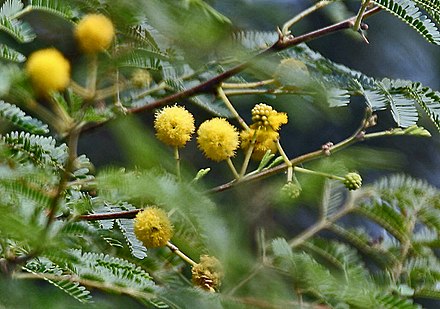
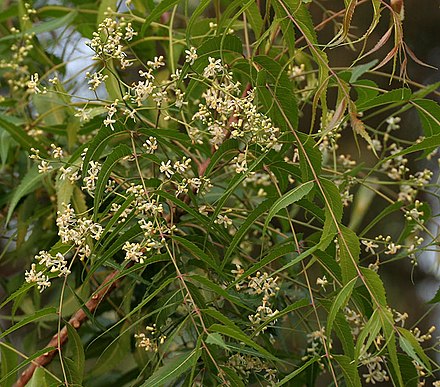
Teeth cleaning twigs can be obtained from a variety of tree species. Although many trees are used in the production of teeth cleaning twigs, some trees are better suited to clean and protect the teeth, due to the chemical composition of the plant parts. The tree species are: [7] [8] [9] [10] [11] [12]
United Kingdom, Europe and United States
Australia
India
Many companies produce special cases for carrying, storing and protecting chew sticks, known popularly as "miswak holders".
When compared to toothbrushes, teeth cleaning twigs have several advantages:
On the other hand, different species of trees have various levels of hardness just as synthetic toothbrushes would, so careful selection of the right hardness is required before use. Excessive scrubbing too can also bring the risk of gum damage, though this is a concern for plastic toothbrushes as well. [13]

Azadirachta indica, commonly known as neem, nimtree or Indian lilac, is a tree in the mahogany family Meliaceae. It is one of two species in the genus Azadirachta, and is native to the Indian subcontinent. It is typically grown in tropical and semi-tropical regions. Neem trees also grow in islands located in the southern part of Iran. Its fruits and seeds are the source of neem oil.

A toothbrush is an oral hygiene instrument used to clean the teeth, gums, and tongue. It consists of a head of tightly clustered bristles, atop of which toothpaste can be applied, mounted on a handle which facilitates the cleaning of hard-to-reach areas of the mouth. They are usually used alongside floss.
Teeth cleaning is part of oral hygiene and involves the removal of dental plaque from teeth with the intention of preventing cavities, gingivitis, and periodontal disease. People routinely clean their own teeth by brushing and interdental cleaning, and dental hygienists can remove hardened deposits (tartar) not removed by routine cleaning. Those with dentures and natural teeth may supplement their cleaning with a denture cleaner.
Gum may refer to:
Dental floss is a cord of thin filaments used to remove food and dental plaque from between teeth in areas a toothbrush is unable to reach.

A toothpick is a small thin stick of wood, plastic, bamboo, metal, bone or other substance with at least one and sometimes two pointed ends to insert between teeth to remove detritus, usually after a meal. Toothpicks are also used for festive occasions to hold or spear small appetizers or as a cocktail stick, and can be decorated with plastic frills or small paper umbrellas or flags.

Salvadora persica, is a species of Salvadora. Used for centuries as a natural toothbrush, its fibrous branches have been mentioned by the World Health Organization for oral hygiene use.

Dentifrices, including toothpowder and toothpaste, are agents used along with a toothbrush to clean and polish natural teeth. They are supplied in paste, powder, gel or liquid form. Many dentifrices have been produced over the years, some focusing on marketing strategies to sell products, such as offering whitening capabilities. The most essential dentifrice recommended by dentists is toothpaste which is used in conjunction with a toothbrush to help remove food debris and dental plaque. Dentifrice is also the French word for toothpaste.

The Miswak is a teeth cleaning twig made from the Salvadora persica tree. It is reputed to have been used over 7000 years ago. The Miswak's properties have been described thus: "Apart from their antibacterial activity which may help control the formation and activity of dental plaque, they can be used effectively as a natural toothbrush for teeth cleaning. Such sticks are effective, inexpensive, common, available, and contain many medical properties". It also features prominently in Islamic hygienical jurisprudence.

Vachellia nilotica is a flowering plant tree in the family Fabaceae. It is native to Africa, the Middle East and the Indian subcontinent. It is also a Weed of National Significance in Australia as well as a Federal Noxious Weed in the United States.

Tooth brushing is the act of scrubbing teeth with a toothbrush equipped with toothpaste. Interdental cleaning can be useful with tooth brushing, and together these two activities are the primary means of cleaning teeth, one of the main aspects of oral hygiene.

Dalbergia sissoo, known commonly as North Indian rosewood, is a fast-growing, hardy deciduous rosewood tree native to the Indian Subcontinent and Southern Iran. D. Sissoo is a large, crooked tree with long, leathery leaves and whitish or pink flowers.
Dental Public Health (DPH) is a non-clinical specialty of dentistry that deals with the prevention of oral disease and promotion of oral health. Dental public health is involved in the assessment of key dental health needs and coming up with effective solutions to improve the dental health of populations rather than individuals.
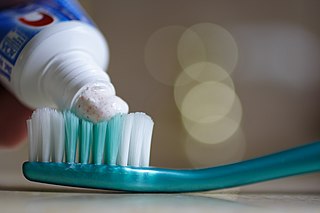
Oral hygiene is the practice of keeping one's mouth clean and free of disease and other problems by regular brushing of the teeth and cleaning between the teeth. It is important that oral hygiene be carried out on a regular basis to enable prevention of dental disease and bad breath. The most common types of dental disease are tooth decay and gum diseases, including gingivitis, and periodontitis.

A tongue cleaner is an oral hygiene device designed to clean the coating on the upper surface of the tongue. While there is tentative benefit from the use of a tongue cleaner it is insufficient to draw clear conclusions regarding bad breath. A 2006 Cochrane review found tentative evidence of decreased levels of odor molecules.
Sarakan is the brand name for a range of oral health products owned by G.R Lane Health Products Ltd.

Buffalo Springs National Reserve is a protected area in the Isiolo County in northern Kenya.
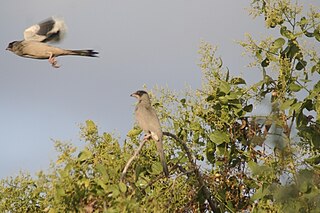
Pilu oil is an extract from seeds of the pilu tree, the meswak tree, and the mustard tree.
Interdental cleaning or interproximal cleaning is part of oral hygiene where the aim is to clean the areas in between the teeth, otherwise known as the proximal surfaces of teeth. This is to remove the dental plaque in areas where a toothbrush cannot reach. The ultimate goal of interproximal cleaning is to prevent the development of interproximal caries and periodontal disease. The combined use of tooth brushing, and mechanical and manual interdental cleaning devices has been proven to reduce the prevalence of caries and periodontal diseases.